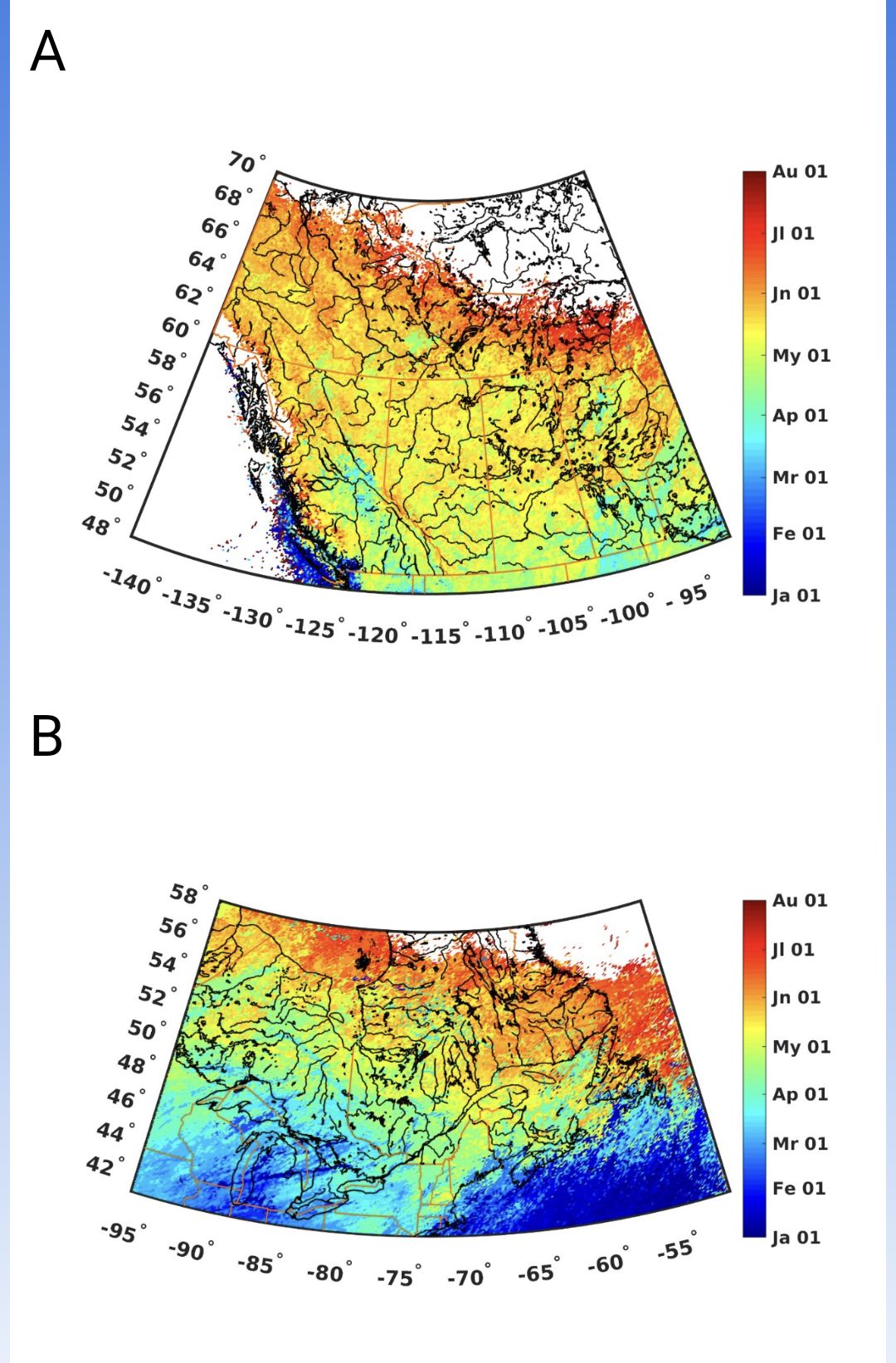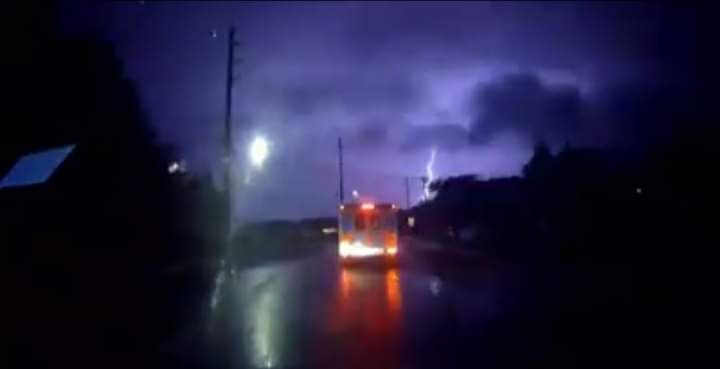**** Info via Environment Canada
Lightning season
As spring blooms, lightning season ignites across Canada.
Did you know that the length of the lightning season varies greatly across the country? In southern Ontario, it runs from mid-March to early November, while in the North, it usually happens between May and late August. Meanwhile, lightning can occur year-round along the Pacific coast, over southern Nova Scotia, and offshore over the oceans on both the east and west coasts.

Average month of the beginning of lightning season across A) western Canada and B) eastern Canada (1999-2018). The length of the season shortens as one heads farther north.
2023 lightning trends
Last year, lightning activity across the nation was notably calm, marking the third lowest total on record since record-keeping began in 2002. Saskatchewan and Ontario recorded their lowest annual numbers. Yet, in the North, activity surged, with Yukon setting a new record, exceeding the lightning long-term average by over threefold.
| Observed | Annual average | % of normal | Rank | |
|---|---|---|---|---|
| Canada | 3,356,522 | 3,942,660 | 85% | 3rd Lowest |
| B.C. | 293,967 | 269,122 | 109% | 9th Highest |
| Alta. | 734,101 | 847,008 | 87% | 7th Lowest |
| Sask. | 448,068 | 697,895 | 64% | Lowest |
| Man. | 440,984 | 471,896 | 93% | 10th Lowest |
| Ont. | 624,410 | 915,764 | 68% | Lowest |
| Que. | 350,897 | 411,987 | 85% | 10th Lowest |
| N.B. | 54,722 | 49,897 | 110% | 9th Highest |
| N.S. | 42,880 | 24,855 | 164% | 3rd Highest |
| P.E.I. | 1,676 | 3,231 | 52% | 7th Lowest |
| N.L. | 32,549 | 25,201 | 129% | 3rd Highest |
| Y.T. | 151,404 | 47,838 | 316% | Highest |
| N.W.T. | 172,494 | 135,648 | 127% | 5th Highest |
| Nvt. | 9,833 | 4,576 | 214% | 3rd Highest |
| **Record-keeping began in 2002. | ||||
Lightning strikes trigger almost half of Canada’s wildfires and account for nearly 67% of the burned land area. This trend persists because lightning-caused fires tend to occur in remote, uninhabited areas where there is minimal threat to human life, property, or timber resources and fire suppression efforts in these regions are often limited. Several lightning fires can also be ignited simultaneously, leaving agencies with difficult decisions about where to send available firefighting crews and equipment.
Despite lightning’s significance as a primary ignition source for wildfires, its incidence was notably low last year. However, the unprecedented scale of land area consumed by wildfires in 2023 sets a stark contrast, underscoring the crucial role drought played in fuelling the severity of the wildfire season.
For more info on last year’s record-breaking wildfire season visit: Canada’s record-breaking wildfires in 2023: A fiery wake-up call.
.




